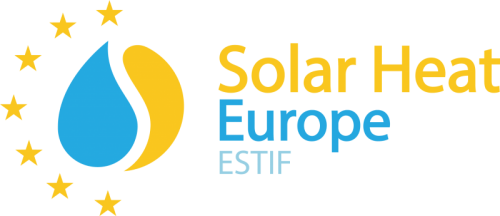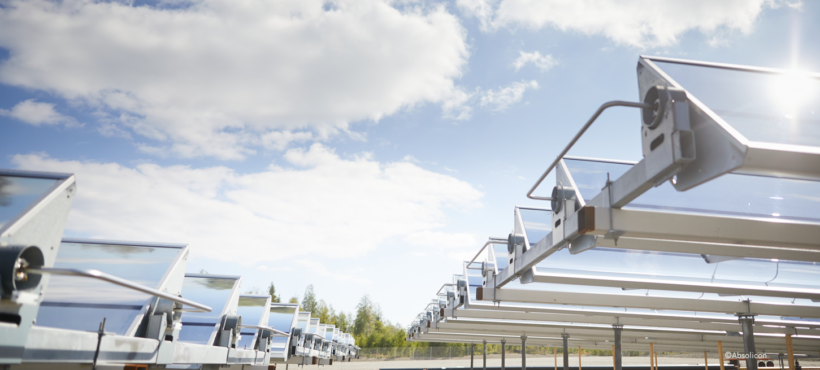The sun is beneficial in many ways and one of them is solving the current energy crisis. If you are still not convinced, we invite you to look at this together. Let’s start!
While still recovering from the COVID pandemic’s hits on the economy and well-being of its citizens, Europe encountered, during the last quarter of 2021, a major threat to its energy security: gas supply was severely reduced while the price of energy shot up.
The natural gas crisis became as such one of the hot topics debated at all levels, including by politicians, the media, business leaders, consumers, environmental representatives, and many other groups.
The weight of this debate does not only come from an economical point of view but it is influenced highly by the current context of Europe’s goal to be the first climate-neutral continent in 2050 and the efforts already in motion through the EU Green Deal and its complementary initiatives.
Why the additional pressure? Let’s solve this riddle together, the game is afoot!
We want to become climate-neutral, alas the largest contributor to CO2 emissions is the energy sector, which at the moment is highly dependent on fossil sources like coal or gas. In order to achieve decarbonisation, we need to drastically reduce and ultimately stop burning fossil fuels. We know the problem and we know how to stop it. The question is the following: is the crisis in gas supply and subsequent increase in energy prices caused because of the deployment of renewables or because this deployment has not been fast enough? It depends on who you ask.
The fossil fuel industry and Europe’s gas suppliers state that the energy crisis is to be blamed on the energy transition’s ambitious goals and the renewable energy sector, as these are destabilising the European energy market.
Hmmm… does that sound right to you?
Recent events such as the reversal inflows in the key Yamal-Europe pipeline the increasing geopolitical risks in Belarus and Ukraine, and the indefinite halt of the Nord Stream 2 pipeline, show us sufficient reason to place the cause of the energy crisis far from the renewables sector. Moreover, the current situation threatens to persist, especially taking into consideration the latest developments in the conflict between Russia and Ukraine. With possible low imports and depleting inventories, investors are now fearing that the ongoing natural gas crunch could be extended into next winter, since inventories may not be sufficiently refilled during the low demand period.
Let’s zoom in on possible solutions for energy security!
We hope to have shown that, far from being responsible for the energy crisis, in fact, renewable energy is the solution to keep gas prices in check, as it can balance the demand and supply. Also, compared with fossil sources which are finite, renewable heat sources… well … will run out in 5 billion years[1]
To stress further the role of renewables in the context of the energy crisis, an important reference has to be made, namely the statement of the European Commission’s President, Ursula von der Leyen released several weeks ago addressing the EU’s response to the Russian aggression against Ukraine: ‘Europe is too dependent on Russian gas. We have to diversify our supplies and we have to go to reliable suppliers. We will have to massively invest in renewable energy because that’s where the future is. This is a strategic investment in our energy independence.’
Looking at the European energy panorama, even if heat accounts for half of the energy consumed, renewable heat has not received the same attention in policies and financial support as renewable electricity has. While recent policy files published by the European Commission, such as the Renewable Energy Directive, bring more light on heat decarbonisation, there is still a major need to stress the importance of direct renewable heat solutions such as solar thermal. Already available solutions such as solar heat can be rapidly deployed if supported properly because they are already proven at small and large scale. Furthermore, taking the specific example of solar thermal, this is a technology manufactured mainly in Europe and its uptake would benefit the European economy by replacing energy imports, saving emissions, and creating green jobs.
Let the sun shine … everywhere!
One of the best practical examples of using the sun’s energy to produce renewable heat is Denmark, which in 2019 had 1GW of solar capacity connected to heat networks. The deployment of solar thermal technology at a large scale through Solar District Heating (SDH) plants includes more than 100 Danish villages, towns, and cities. SDH plants have not only brought environmental benefits to the country but also economical ones, with solar heat prices ranging from 20€/MWh to 40€/MWh, beating the gas heat price. And Solar District Heating is not an exclusive Danish reality, as there are more than 200 European district heating networks (3%) that are already using solar heat, with the oldest running installation in Sweden, which was built in 1985. Moreover, an IEA-SHC study[2] shows that more than 6000 district heat networks from Europe have suitable conditions for SDH.
Solar heat has also a strong potential for industrial uses. Solar heat for industrial processes (SHIP) is a quickly growing market with over 200 installations, with many large multinationals signing up, such as Pepsico, Ab InBev, Colgate-Palmolive, Carlsberg, Tata, and many more. According to IEA[3] 11% of all industrial heat below 400oC will come from solar thermal, while IRENA[4] estimates that €700 billion will be invested in industrial heat up to 2050 compared to only €250 billion in biofuels.
Furthermore, solar thermal has a long track-record in European buildings, as there are over 10 million solar thermal systems installed on European rooftops. This number is growing and, according to IEA[5], by 2050, there will 1.2 billion homes with solar thermal on rooftops globally, five times more than what is projected for solar photovoltaics (240 million).
Enough talk, time to walk
We know the problems; we have the solutions. We need to act now by replicating successful examples and by redirecting the investments of billions of Euros into developing a modern solution using renewable heat, instead of pursuing investment that is prolonging our dependence on imported fossil fuels. As demonstrated in recent times, investing in renewable heat is not only about the climate and stability in energy prices, but also ensuring peace in Europe. Which is quintessentially what the European Union is all about.
[1] It is estimated that the sun will run out of hydrogen in about 5 billion years, giving us heat for generations to come.
[2] https://planenergi.dk/wp-content/uploads/2018/08/SDH-Trends-and-Possibilities-IEA-SHC-Task52-PlanEnergi-20180619.pdf
[3] Future role of solar heat in IEA’s Net Zero Roadmap – Solarthermalworld
[4] Transforming the energy system – IRENA
[5] Net Zero by 2050 – A Roadmap for the Global Energy Sector


Leave a Reply